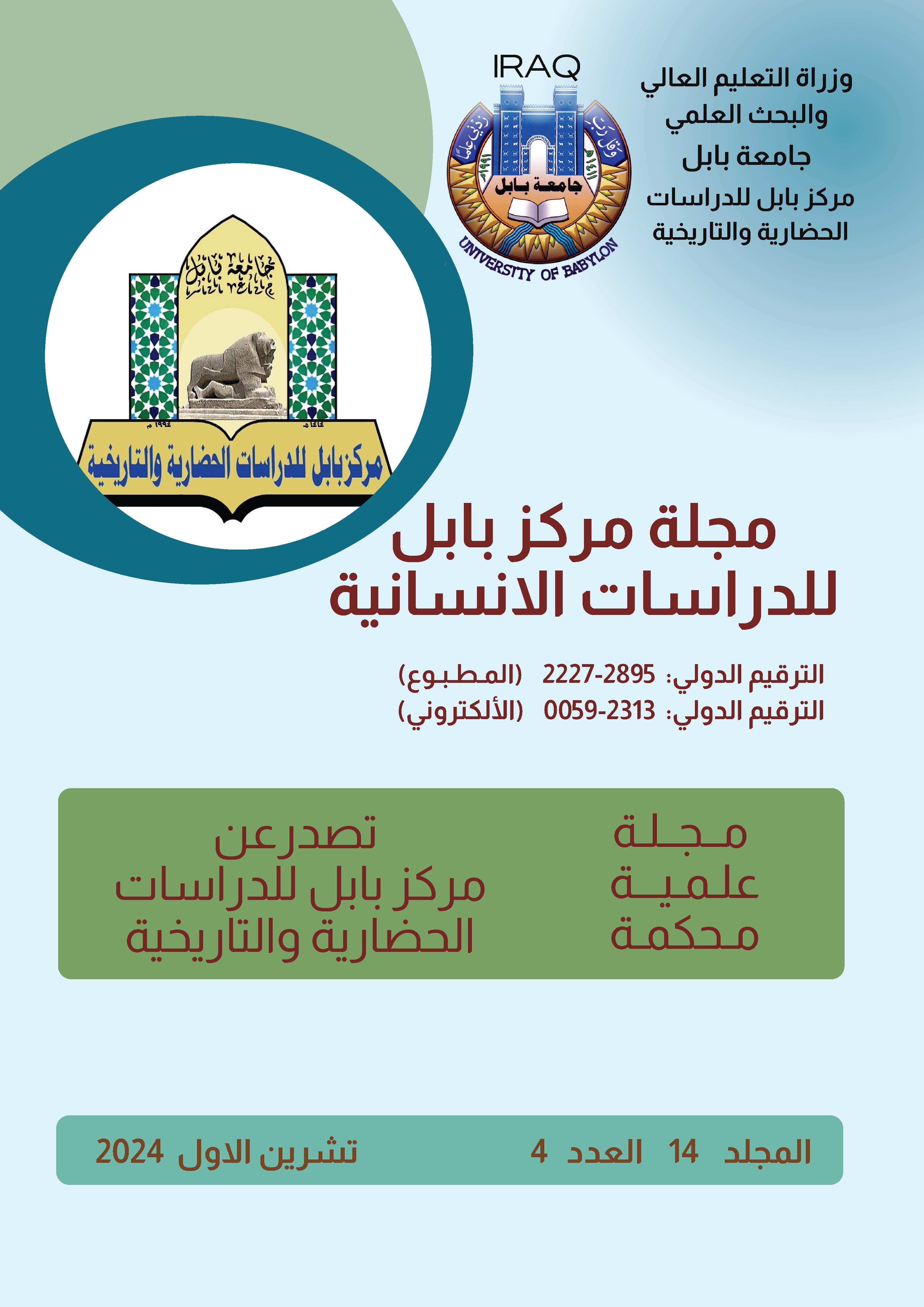Narrative of place in the novels of the Iraqi writer Muhammad Mishal (Al-Sabari, Altaf, and Hajj Karbala are examples)
Keywords:
place, Muhammad Mishal, Al-Sabari, Altaf, Hajj KarbalaAbstract
The place is the arena in which the events of the novel take place through transformations at the level of the characters’ actions and from the narrator’s vision. The place is the extent to which the narrator achieves his perceptions through the connection between the elements of the novel. The approach followed in the research will be the descriptive-analytical approach, accompanied by content analysis and deriving results through studying models extracted from the text of the novels. Through our study of the place in the novels of the writer Muhammad Mishal, we conclude that the familiar place is the most present, represented by the home and the holy places. This is due to the social nature of Iraqi society represented by family and ideological adherence. Likewise, the frightening place represented by the mass graves and the prison is depicted as an important aspect in explaining the extent of the injustice and persecution that is practiced. By a dictatorial government against a people who wanted to express their will and demand their freedom in a peaceful manner. The form of the open space was the largest share among the texts of the novels, represented by the road, the street, and the market, revealing the political and economic conditions and the suffering of the Iraqi people. The closed space does not differ from the open space in revealing the political situation and the intellectual transformation. It also expressed the crisis state of the Iraqi personality, through what was going on. In the café, the church, the date store, and the form of the mobile place whose events took place with a variety of means of transportation, including the passenger bus in Al-Sabari, the truck in Altaf, and the boat in Karbala’s Hajj. We also studied the functions of place: constructive, evocative, interpretive, and documentary in The three novels.







